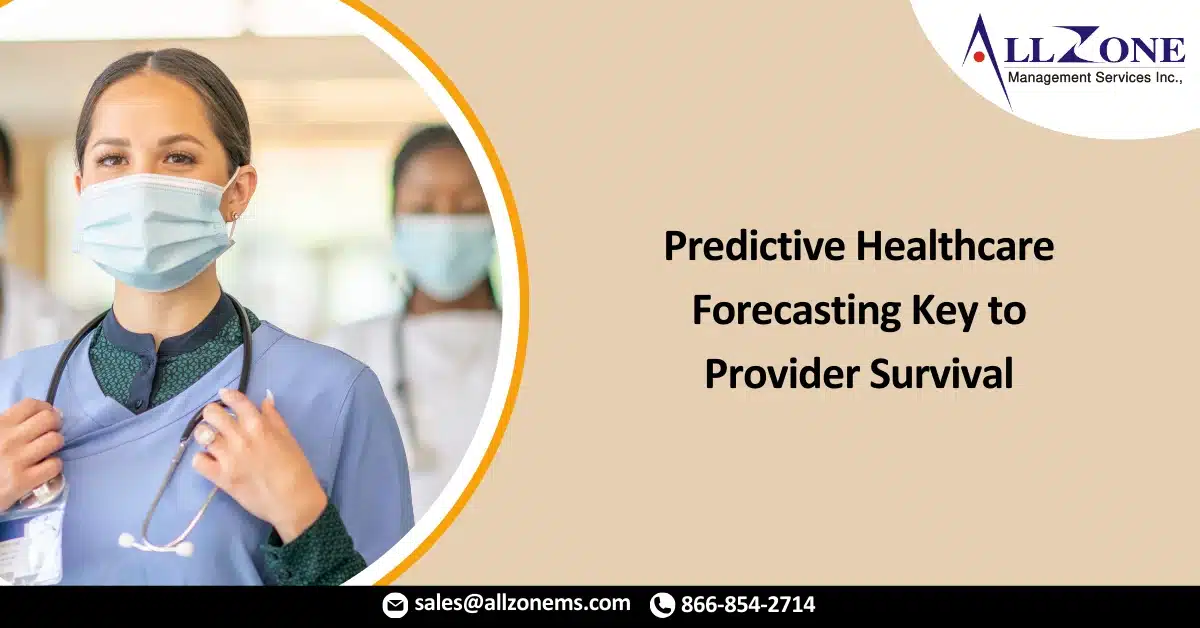Healthcare forecasting that can adapt quickly to changes could be as critical to a provider organization’s survival in 2021 as wearing a mask to stop the spread of COVID-19, experts at PwC’s Health Research Institute are saying.
Nearly three-quarters of healthcare executives (74 percent) recently surveyed by the Health Research Institute said their organizations would invest in more predictive modeling in 2020, they explain in the new report Top Health Industry Issues of 2021.
“No longer can healthcare organizations review the past 30 days of claims or historical behavioral trends to determine next steps. They need real-time insights to create the healthcare industry’s own forecasting system to alert healthcare leaders to the shifting fronts that may have a major impact on their business,” the report states.
No provider could have predicted the emergence of a novel virus and its impact on patient volumes and revenues in 2020. But providers quickly realized that their 2020 budgets and forecasts had to be thrown out the window once COVID-19 hit in the US early in the year.
But now, providers are wondering what 2021 may hold, especially as COVID-19 cases and hospitalizations continue to rise across the country.
A new approach to healthcare budgeting and forecasting will be the key to managing the uncertainty surrounding 2021, the Health Research Institute states.
“The experience of the pandemic showed the need for healthcare leaders to move from a retrospective view fed by historical trends and past claims to a prospective view based on real-time information, both clinical and nonclinical,” they write in the report.
Provider executives are confident in their ability to understand supplies and workforce, but they are less sure of their view of future supply and demand, the Institute found in a survey for the report.
Access to data has been a major challenge for provider executives beyond COVID-19. Over half of executives (54 percent) surveyed by consulting firm Kaufman Hall prior to the pandemic said they have insufficient data, benchmarking, and reporting tools to completely support efforts to reduce costs without compromising care quality. Additionally, 15 percent of respondents also said they had no tools in place.
Yet accessing the massive amount of data flowing through claims systems, electronic health records, cost accounting systems, patient satisfaction surveys, wearable devices, and other sources could help providers predict volumes by service lines and sites of care, as well as plan for clinician staffing, personal protective equipment needs, and vaccine distribution, the experts say.
New interoperability rules could help providers get their hands on the data needed for stronger, more predictive forecasting, according to the Health Research Institute.
But taking a more regional approach to healthcare budgeting and forecasting will also be critical.
“Every healthcare organization will need regional radars to help them simulate possible future paths. Cross-sector collaboration could help spread the work,” the report states.
As an example, the Institute cited an academic medical center or county government convening a consortium to create a regional forecast using data from health information exchanges, community hospitals, payers, and suppliers who have information on the local economy, consumer behaviors, and community demographics.
“From that forecast, all organizations, including life sciences companies, can make data-driven decisions to improve the health of their communities and reduce waste,” they explain.
Healthcare organizations, in particular, can also use the information to “shift gears to prevent dramatic drops in revenue from plummeting surgeries” and “to fine-tune their workforce plans to make sure they have exactly the right number of employees to respond—all of which avoids wasteful spending during crucial times,” the experts say.
Predictive healthcare budgeting and forecasting is already helping organizations like John Muir Health in California respond to what is happening in their communities in near real time.
“It’s true that we’re budgeting for shorter timeframes. However, what it allows us to do is actually give managers, directors, and the folks who are actually running departments targets that they can focus on,” Chris Pass, CFO of John Muir Health, tells RevCycleIntelligence. “And if things change drastically in the beginning of the year, say, in the first quarter, then we can give people new targets throughout the year.
The health system has been using the predictive healthcare budgeting and forecasting technique known as rolling forecasting for about four budget seasons now. The decision to do that stemmed from the need to be nimbler, and it has paid off during a highly unusual and volatile year, Pass stated.
But COVID-19 has been the impetus for implementing rolling forecasting for others like Nebraska Medicine.
“Using the rolling forecast and looking at trend data is the way we’re going to be going a little bit more as we do an operating budget,” says Kristi Atkinson, budget and cost accounting manager. “It’s going to be a little different. We’re going to be more flexible.”
Flexibility is key in the current landscape. The pandemic has made it difficult for healthcare organizations to predict what their providers will need to handle, like potential new waves of the virus. With the help of labor data and analytics, Nebraska Medicine is able to adapt quickly and even avoid furloughs and other staff disruptions.
But using more predictive forecasting tools is not a one-time exercise and will be a top issue in the new year, warns the Health Research Institute.
“Healthcare companies need a constant reading on these streams to understand how to adapt care and engagement in response to crises or sudden shifts in behavior and mobility,” they say.
For More Information: Predictive healthcare forecasting key to provider survival in 2021

